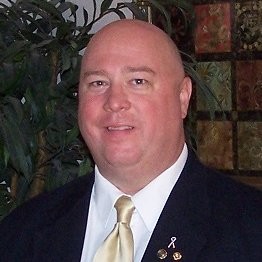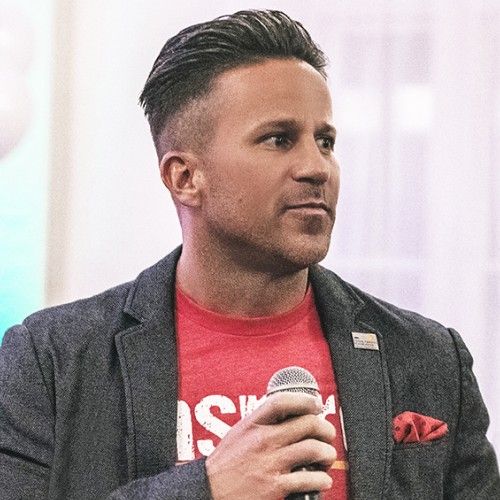In the last couple of months, Sam’s team has grown immensely. They have good ideas, insights, and most importantly, engagement and the ambition to work together and take on more has spiked.
Sam’s team’s engagement levels have been increasingly growing, making his team and company much stronger and ultimately more successful. However, he doesn’t have any quantitative results to show this because of economic and regulatory factors that have impacted his team’s ability to achieve the results they set out at the beginning of the quarter (before the economic and regulatory changes occurred).
It takes time and effort to grow a team to reach success. If people aren’t engaged, then a team’s overall efficiency and success rates will reflect that. However, when a team is engaged, the company is open to reaching high levels of success.
In Sam’s case, the CEO found their lack of quantitative results concerning. Going into the meeting, Sam was excited to present their team’s growth and improvement as a unit. How can Sam approach this conversation with his boss, and show the team’s growth and improvement over the last couple of months, without quantitative results?
Here are some helpful tips when having a performance review discussion with a boss who doesn’t think you’ve accomplished much:
Mentally prepare yourself before the conversation
Before entering the meeting, tell yourself that regardless of how the meeting goes, it's just a meeting about one individual's perspective of your performance. Performance discussions are simply a way for you to receive information and feedback about how you're performing in a particular position within the company.
It isn't an evaluation of your personal worth or how you would perform in a different position or with a different company. Don't take the feedback too personally. Instead, use their comments as you see fit to improve at your job and interact with colleagues.
Think before you react
When receiving negative feedback for poor work performance, it can stir some emotions that can quickly surface. If this happens to you, do your best to take a deep breath and count to three before you react with an outburst that might make matters worse. It's best to take the time to listen to your manager's input and allow yourself a few days to process the information before reacting or responding.
If this is a case where your boss may not realize that your team is growing stronger and making improvements as a unit, but may not have reached a big goal yet, you can take a moment to show your boss that you hear what they’re saying, and then communicate the growth that is progressing between you and your team. At the end of the day, your boss may not empathize why regulatory/economic/any other factor outside of your control is impacting your team’s ability to perform, but it is critical that your boss understands that they are occurring and that your team is pivoting and making improvements given the circumstances.
Ask your boss for a performance improvement plan
If you believe there is validity to your manager's points, ask for an improvement plan that outlines specific goals and objectives. Make sure you align with your manager on specific ways to improve your work performance. This is a radical suggestion as typically performance improvement plans come from the top down. But if you specifically ask for it and craft it with your leader, you can control the outcomes in which you are being measured against versus them determining them for you (without their empathy or understanding of the situation).
The goals and objectives should be specific and quantitative with a specified time in which to reach them; the more specific, the clearer it will be that you have met the goals as requested.
Keep the communication open
Ask your manager if you could schedule some regular meetings with him or her so you can discuss your progress and the current state of performance.
Having regular communication with your manager is beneficial regardless of performance, but especially when performance is a concern.
One easy and effective way to boost your communication with both your boss and your direct reports is via AIM Insights.
Every month with AIM Insights, direct reports are sent to an automated survey from the AIM Insights platform. The average monthly survey is about 10 questions long and takes about two minutes each. The end of every quarter culminates with a 50-question survey, which is still fairly short, amounting to about 5-8 minutes each.
Seek training and education
Ask your manager for suggestions or training resources that could help you improve in the work areas that were identified as your problem areas.
This type of action demonstrates initiative and shows that you genuinely care about your work performance.
Another simple and easy way to demonstrate this initiative is via AIM Insights.
Similar to other HRIS systems, AIM insights has a task management and assignment feature. This allows you to determine priorities, importance, deadlines, and many other important factors in goal setting. More importantly, you can also assess your direct reports’ goals, and then enter your own feedback through the program on how these tasks were completed.
AIM Insights Executive Coaches can analyze all of this data as well and give you additional feedback on your goals.
Work with a career or personal coach
If you're struggling at work and genuinely want to improve, consider hiring a career or personal coach to help you.
Sometimes hiring a coach can be very expensive. One cost-effective way to get coaching is via AIM Insights.
Not only can AIM Insights seamlessly work with the HRIS systems you already have in use, but it can then proceed to add to your current processes. Direct reports are sent regular monthly surveys to complete, which are then reviewed by AIM Insights Executive Coaches. After this review, these coaches will then discuss these responses with you and your fellow managers to see how you can improve and what topics you should discuss within your direct report 1:1s.
These surveys are anonymous and are only between direct reports and AIM Insights. With anonymity, direct reports are more likely to give candid feedback, and more thorough feedback. The surveys do not require much time and are easy to take.
Why is it important to track employee engagement as a form of team progression?
To analyze employee engagement, you need to know what your organization is doing well and where you can improve. Knowing how to measure employee engagement is the jumping-off point for evolving your engagement strategy.
Some things are easy to measure because they are concrete, individual concepts: like the time it takes you to drive to work or how many red lights you can hit without being late. But employee engagement is a bit more difficult. It isn’t concrete, and it’s influenced by many factors.
Before we talk about measuring engagement, let’s review how we define it:
Employee engagement is the strength of the mental and emotional connection employees feel toward their places of work.
According to Gallup, organizations with highly engaged employees have 17% higher productivity and 21% higher profitability.
Bottom line: engaged employees work harder and stay longer.
Here are some key benefits of measuring employee engagement:
- To build trust. Asking for feedback from employees shows that you care about their opinions and how they feel at work. Prove that you’re there to listen and you want to create the best experience possible.
- To help everyone understand what’s going on. Once you have the data—share it with everyone—leaders, managers, and front-line employees. This gives everyone the opportunity to help contribute to a better culture.
- To understand trends. Understand what’s happening in your organization by location, team, over time, or compared to industry benchmarks. Keep a pulse on how and where the organization is (or isn’t) progressing.
Engagement is the culmination of how team members feel about:
· Their camaraderie with other team members
· Amount of energy they receive from doing the work
· Whether or not the work compliments their strengths
· How much they align to the mission of the company
How can I showcase my employee engagement?
One unique element of AIM Insights is its ability to deliver data on a team-by-team basis in terms of engagement. E.g. it can inform me how engaged my team is which impacts engagement, productivity, and retention.
There’s no better way to ensure that your managers are the utmost prepared to lead at your workplace than the AIM Insights People Leader Certification.
After all, managers and leaders provide direction to staff and ensure they are performing at or above expectations. They need to have the ability to assess problems, manage situations, and provide sensible solutions.
Even if you haven’t had any big recent wins, tracking your overall employee engagement and metrics that showcase that you have been able to pivot, despite not many tangible outcomes yet, allows you to see your team’s progress over a period of time and show your boss that you are putting in the work to get on track.




































































